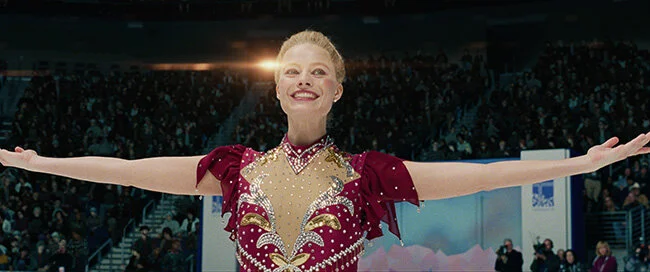Frederick Wiseman’s Outside-In View
Image courtesy of The New York Public Library and Zipporah Films
“An institution is the lengthened shadow of one [person].” — R. W. Emerson
Even in an age when everyone is documenting their own lives via social media, some still make art out of portraying the lives of others. We call these soul-sucking leeches (and I know, I’m one) documentary filmmakers. There are three basic species of documentarian, each corresponding to a different rhetorical strategy as outlined famously by Aristotle: logos, ethos, and pathos.[1] As storytellers, documentarians utilize all of these strategies, although certain types of film are naturally equipped to rely on one more than others. Filmmakers who deploy all of the standard conventions – deep-throated voiceover, interviews with “experts,” inter-titles, myopic presentation of actual documents and photos – to present objective-seeming, authoritative accounts of their subjects are attempting to appeal to the rational side of their audience, their logos. In contrast, some directors feature themselves and the making of their films as chief characters and major plot lines in their films to construct a persona – their ethos – as the bellwether of credibility for the stories they tell. The third type – here exemplified by Frederick Wiseman – place their audience before natural-seeming action whose unfolding creates a drama that connects to the emotions, their pathos. Wiseman’s process – shooting hundreds of hours of vérité footage, selecting particular sequences, and crafting the sequences so they tell stories in alignment with a meta-narrative – creates portraits whose seamlessness engenders gravitas, as if the action merely unfolds before an invisible witness. Wiseman, however, and much to his credit, consistently holds that he directs very “personal” studies that selectively reveal, conceal, and juxtapose to create intended impressions on viewers.
Still from Ex Libris: The New York Public Library. Image courtesy of Zipporah Films
Wiseman’s latest film, Ex Libris: The New York Public Library, is part of a shift in perspective. No longer depicting the interplay between the marginalized and their overseers, Wiseman now presents a view from the center of the institution – highly orchestrated presentations by officers, chief administrators, and lecturers. And so, whereas his previous filmography examined the dialectic between powerless outsiders facing large, indifferent institutions, and those tasked with maintaining authority, his new work amplifies only the point of view from within institutions, occluding critical challenges.
Still from Ex Libris: The New York Public Library. Image courtesy of Zipporah Films
Frederick Wiseman came to cinema as a second career after practicing and teaching law. While his work as a lawyer may have helped him weed through jungles of overgrown narratives to identify a useful tale, other factors also shaped his nascent pathos filmmaking. Wiseman broke into cinema as the New American Cinema’s tales of the powerless – each carefully chosen and crafted to motivate people to reject, or, at least, modify the status quo – were making inroads into the American mainstream by Filmmakers Inc.
Shirley Clarke, who founded Filmmakers Inc. with Richard Leacock, Albert Maysles and D.A. Pennebaker, had just released a film adaptation of The Connection, Jack Gelber’s 1959 play for The Living Theater about a white man producing a play featuring actual African-American jazz junkies from Harlem. Featuring pontificating junkies, each copping to their victimization, the transgressive subject matter drew audiences, Obie awards, and controversy while the film’s didacticism reflected the idea that art reveals the voice of the otherwise voiceless.[2] Clarke’s film opened at Cannes in 1961, was censored for its rampant use of the word “shit” to refer to heroin, and, after a year of legal battles, opened among fanfare to weak reviews and waning audience. Wiseman’s point of entry into cinema came in 1963 with Clarke’s next film, The Cool World, though as a producer. Clarke doubled down on combining agitprop and exploitation in The Cool World, with gangs and gun violence as its transgressive thematic.
Still from Ex Libris: The New York Public Library. Image courtesy of Zipporah Films
With Titicut Follies, Wiseman’s directorial debut, he turned from the gritty realism of cinéma vérité to full-on documentary, depicting the docile inmates of the Bridgewater State Hospital as they were harassed and humiliated by their guards and other functionaries. Then a law professor at Boston University, he had brought his class to Bridgewater and returned undercover with a camera to affect his audience by not-so simply showing them what he saw. Premiering in 1967, Titicut Follies was part of a then-current critique of mental institutions and the liminal space separating mental wellness from illness beginning with Erving Goffman’s Asylums (1961), and including Ken Kesey’s One Flew Over the Cuckoo’s Nest (1962) as well as the psychedelic movement in popular culture.
Like The Connection, Titicut Follies was banned upon its premiere at a major film festival, with the ensuing controversy providing publicity for its director. With a harsh depiction of the lives of weak people subjected to the strictures of an imposing mechanical bureaucracy adrift from its humanistic mission, Wiseman’s basic Foucauldian prism was in place. As is so often the case with a successful first endeavor, its director then proceeded to reproduce this formula in different contexts, as if all American institutions are essentially wayward asylums for the criminally insane. After the only slightly fancifully named Titcut Follies, Wiseman disposed with literary titles altogether, as if clinically indexing what drifts before his lens – High School, Law and Order, Hospital, Basic Training, Juvenile Court, Welfare, etc. – releasing a different film on a different topic each year. With each of these films, Wiseman’s depiction of abject powerlessness became more pronounced, reaching its climax in the mid-1970s with Primate, a film that shows scientists sadistically dominating animals they purportedly study, and Meat, wherein the cattle and their handlers are thrown into a meat grinder – one literally, the other figuratively. More recent endeavors, like Central Park and State Legislature, are still somewhat bleak, with the former revealing discomfort when public assets are privately funded and the latter depicting American democracy in Idaho as recondite in ritual, unconstitutionally Christian, and ponderous.
Still from Ex Libris: The New York Public Library. Image courtesy of Zipporah Films
With Boxing Gym, in 2010, Wiseman began to celebrate more than criticize. Moral issues related to violence as sport and brain injury fell outside of its purview. Likewise, La Danse could well be an overlong advertisement for the Paris Opera Ballet or, if he permitted quick edits, for a perfume. In 2013, Wiseman released At Berkeley, a film fully embracing the University of California’s most storied campus during budget cuts while glossing over how the narrow ideological perspective of its faculty and consequent intolerance of its students are impediments to fulfilling a truly public mission. Berkeley is seen from the inside – self-important administrators who seem to believe that they represent the only public university in the United States, smug faculty contemptuous of an America that grants them power and voice, and grandstanding students whose protests against budget cuts merely cost the school in overtime. (In fairness, Wiseman also presents images of manicured lawns and new construction that belie the budget narrative, and includes some trenchant criticisms of the protestors by fellow students and administrators.) National Gallery is also in love with its subject and gives short shrift to problematic issues of representation and access. Likewise, In Jackson Heights is a paean onto the diversity of the neighborhood without addressing the social costs of ineffective immigration policy.
“It was a pleasure to burn.”[3]
Ex Libris: The New York Public Library, the latest of Wiseman’s films, is comprised primarily of presentations by officers of the Library, lectures, and images of swanky fundraising affairs. Instead of seeing people reading, paying fines, waiting in line to request books, asking the homeless to leave, being asked to be quiet, and fighting sleep as they take notes – the sorts of images one could have expected from the Wiseman of old – we are served up the idea that libraries are not about books or reading and the film has few images of either. Ex Libris devotes little screen-time to the Rose Reading Room, the bibliophilic holy of holies. Instead, some of the only images of people reading feature professional researchers using laptops and on-line catalogues in specialized rooms. A senior library administrator sneeringly proclaims: “Some people still think that libraries are about books. They are about learning.” We do not see any public response, as if the issue has settled by the authority and attitude with which it is pronounced. The New York Public Library, no longer seen by its custodians as an oasis of quiet reflection and a source of information, is hollowed out, an empty space to be filled – a lecture hall, a banquet hall, a music hall, a space for social workers. Functionaries, freed from the traditional mission of the library, devote resources to liquidating the library’s assets (digitzing books) while providing Wi-Fi, dance lessons for the elderly, services for the deaf and blind, and curating lecturers within a narrow ideological bandwidth. Regarding these lectures, we do not see any critical response, although, hopefully, they were given in a space that allows for free exchanges.
On the evening when I saw Ex Libris at Film Forum, Frederick Wiseman was in attendance. After the film, a woman was incensed: “What about the books? These same administrators voted to have the stacks cleaned out and the reading room made into a café.” It was an obvious, though no less profound, response to a film that tries so hard to deny the NYPL’s crisis of mission, yet begs it nevertheless. After all, a library without books or readers is like a Deleuzian “body without organs” – a schizoid fantasy. Wiseman replied defensively, brandishing a non-sequitur: “There are two million volumes under the park….” Not to be deterred, she continued, “But most of the collection has been taken miles away, off-site, and it requires special permission and days to gain access to them.” He did not recognize her follow-up, choosing instead someone jumping as if a contestant on The Price is Right. This brief interlude was an illuminating and refreshing contrast to the preceding three hours and seventeen minutes, a fine Wiseman-like juxtaposition in real time, affecting logos, ethos and pathos. In the future, it seems, there will be no readers, no books, and no critical exchanges, but there will always be administrators.
[1] Aristotle, Rhetoric, 1356a 2,3
[2] Malina was drawn to the script as it depicts their subjects as “victims of…Western civilization.” Lauren Rabinovitz, Points of Resistance: Women, Power, and Politics in the New York Avant-garde Cinema, 1943-71 (1994), p. 115.
[3] Ray Bradbury, Fahrenheit 451, Ballantine Books (1950) p. 5.













